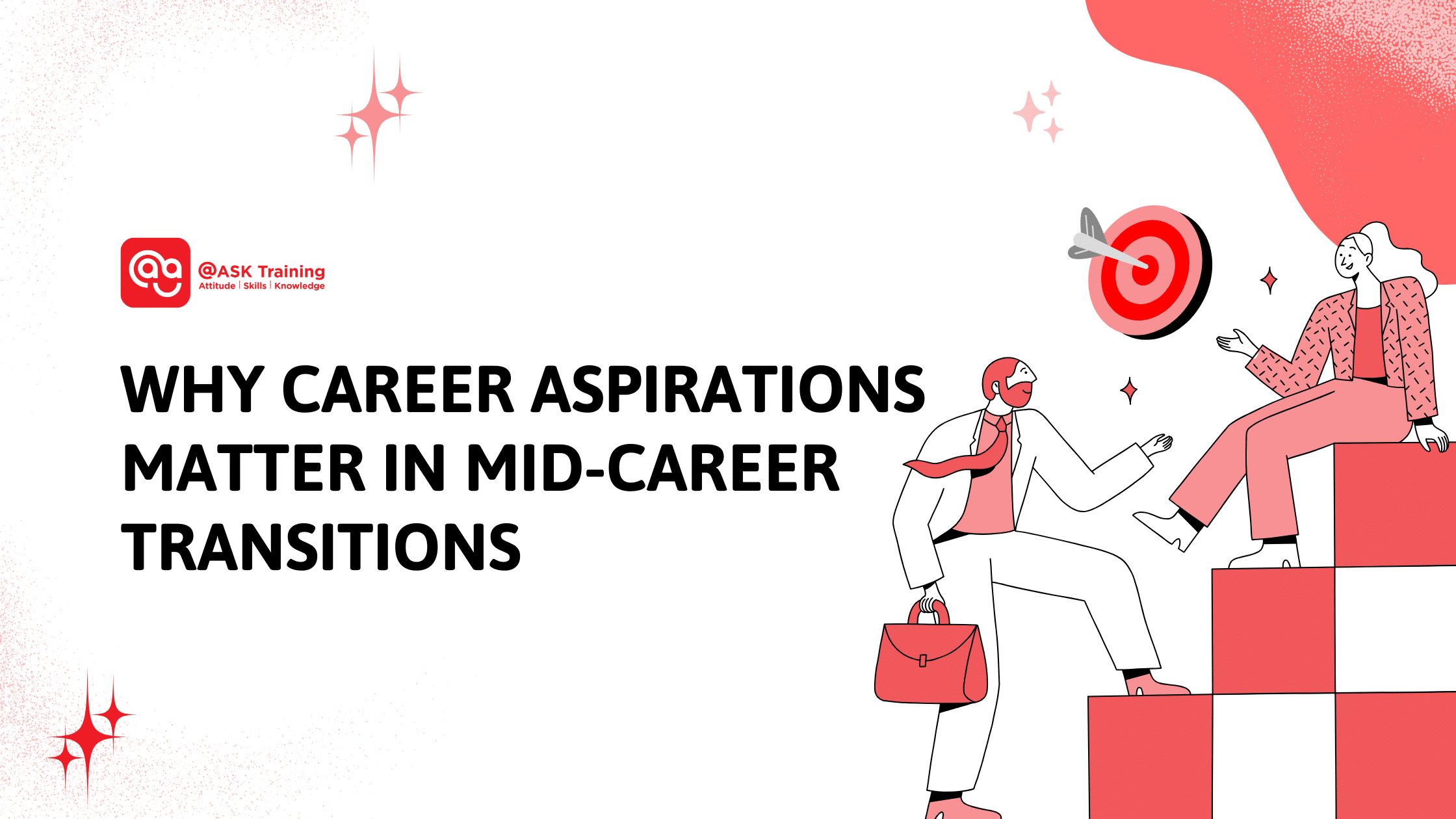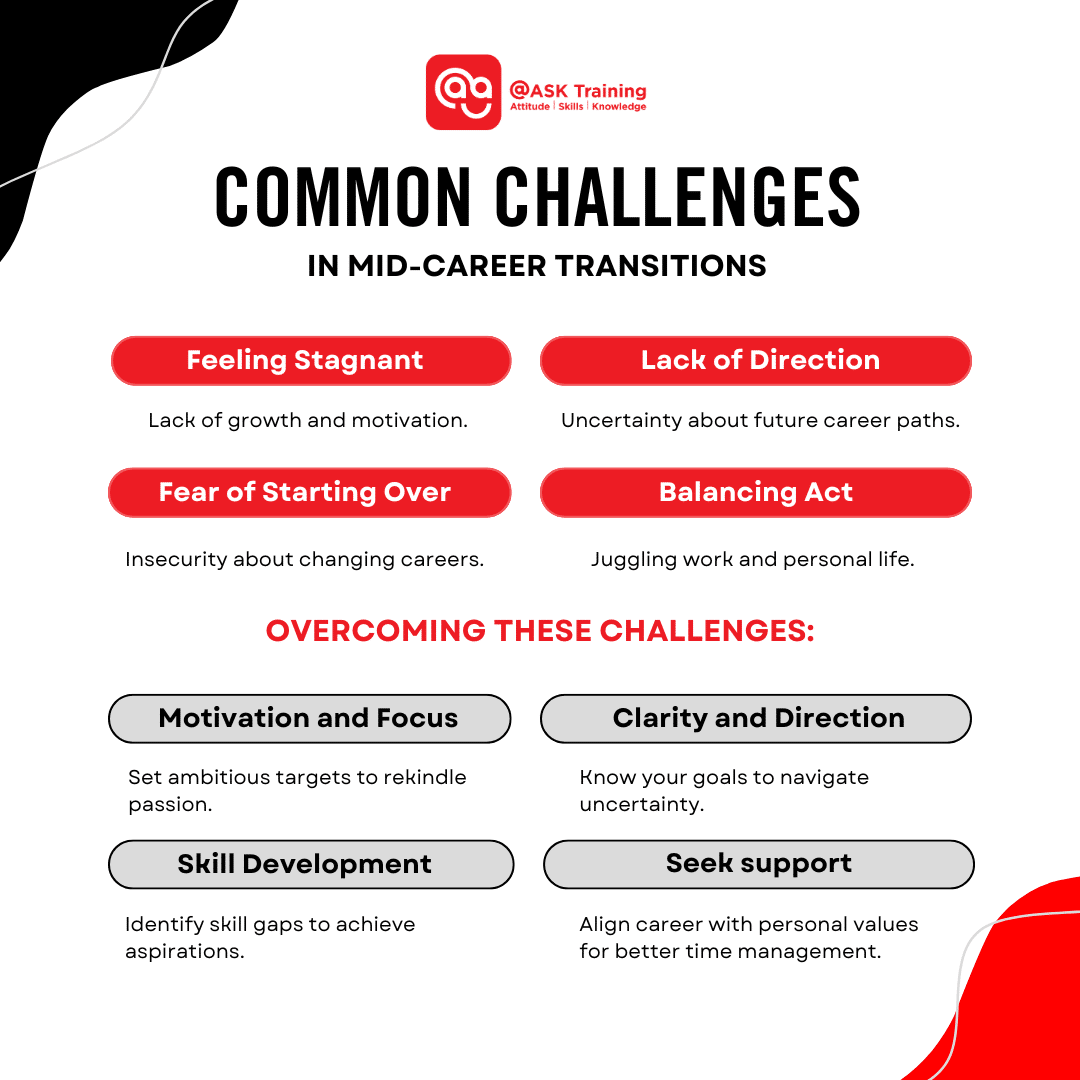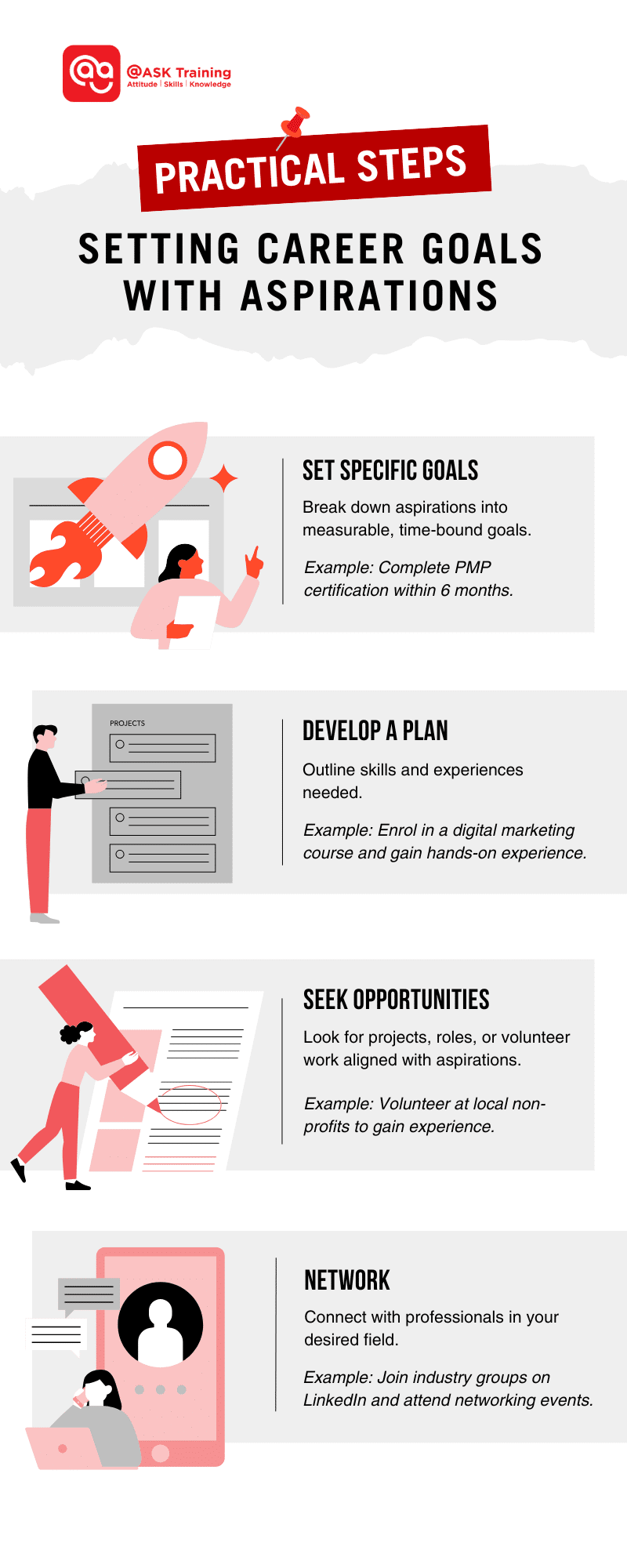As a mid-career professional, you’ve spent years climbing the corporate ladder, mastering your craft, and building a solid foundation in your career. As you reach the midpoint of your professional journey, a new set of questions may arise: Where do you want to go from here? What are your next steps? How can you continue to grow and evolve? The answers to these questions lie in your career aspirations!
Career aspirations are your long-term professional goals that align with your values, skills, and passions. Many mid-career professionals experience a sense of stagnation or feel they have outgrown their current roles. Redefining your career aspirations provides direction during these transitions, serving as a guiding light and regaining your motivation.
Clearly defined career aspirations can benefit you in numerous ways. They can help you make informed decisions about your career path, such as whether to pursue a promotion, a career change, or entrepreneurship. They can also impress potential employers during job interviews, showcasing your ambition and long-term vision.
This article will explore the importance of career aspirations, common challenges during transitions, and practical steps to align career goals with new aspirations. We also share success stories that highlight the significance of continuous learning and self-assessment.
By understanding and redefining your career aspirations, you can develop both personal and professional growth strategies. Let’s explore how career aspirations play a role in professional growth.
The Role of Career Aspirations in Mid-Career Transitions
Career aspirations are not static; they evolve as individuals gain more experience, skills, and insights into their professional lives. In the mid-career development process, revisiting and redefining these aspirations is essential. This helps to align their career trajectory with their current values and goals, leading to greater satisfaction and, ultimately, job satisfaction.
For example, a professional who aspires to transition into a marketing role might focus on gaining certifications in digital marketing and building a strong portfolio of projects. Alternatively, someone who dreams of working in the tech industry could start developing coding skills and taking on freelance projects to build their experience.
Common Challenges in Mid-Career Transitions
Transitioning mid-career comes with its own set of challenges, and it’s important to identify and address them:
Feeling Stagnant or Stuck
Many mid-career professionals feel stagnant in their current roles. In Singapore, where the job market is competitive and the standard of living is high, there might be additional pressure to achieve success early. Hitting a plateau mid-career can lead to frustration or dissatisfaction.
Lack of Direction
Uncertainty about where to go next can be a significant hurdle. The lack of clear next steps on what to do or how to shift away from your initial career path can feel daunting. On top of that, the fast pace of change in the job market today also demands a lot of time and effort to constantly upskill in that field.
Fear of Starting Over
There is often a fear of making a wrong move or starting from scratch. This is especially true in Singapore, where people tend to invest heavily in their education and career pathways from an early age. The idea of switching careers midway can be intimidating, especially when factoring in competition from younger, tech-savvy professionals.
Balancing Professional Growth with Personal Responsibilities
Managing career growth and personal life can be challenging. Having to juggle between Singapore’s demanding work culture and family obligations can create additional challenges and make a career transition feel even more overwhelming.
While these challenges may seem daunting, focusing on career aspirations can provide clarity and direction to help overcome the above challenges. For instance, if someone feels stagnant, reflecting on their aspirations can help identify growth opportunities. Similarly, if there is uncertainty about the future, clear aspirations can help map out a path forward.
For example, a professional aiming to move into management might focus on leadership training during their career transition. Alternatively, someone who dreams of working in the creative industry might take up graphic design or video editing courses to enhance their skill set and portfolio.
By aligning their aspirations with their career goals, professionals can navigate transitions more smoothly and with greater confidence.
How to Realign Career Aspirations During a Career Change
Successfully navigating a mid-career transition involves reassessing and identifying new career aspirations. To identify new aspirations, start with:
Self-Assessment
Reflect on your values, interests, and strengths. Take time to think about what you want to achieve professionally and personally. Questions like “What are my strengths?” and “What interests me most about my work?” can help guide this reflection. Utilise tools like personality tests and career assessments to better understand your core motivations and how they can help with potential career moves.
Feedback
Regularly seeking input from peers, mentors, or career coaches to gain different perspectives on your skills and potential future directions or evolving goals. Career change guidance also provides valuable insights into areas needing improvement or adjustment.
Exploration
Research different industries and roles. Attend industry events and network with professionals to gain insights. This broadens your outlook and horizons, potentially presenting possibilities you may not have considered before. If you aspire to move into a new field, you might need to take additional training or certifications to acquire the necessary skills. Regular self-reflection is key to keeping your career aspirations consistent with your goals.
Practical Steps to Setting Career Goals with Aspirations
Once you have a clear understanding of your career aspirations, the next step is to realign your career goals:
1. Set Specific Goals
Break down your aspirations into specific, actionable goals. Ensure they are measurable and time-bound. This approach creates a clear roadmap to track progress effectively.
Example: If you aspire to become a project manager, set a goal to complete the Project Management Professional (PMP) certification from the Singapore Chapter of the Project Management Institute (PMI) within the next six months.
2. Develop A Plan
Outline the skills and experiences needed to achieve your goals. This may involve further education, certifications, or hands-on experience. Having a plan ensures focus and motivation during a career move. At the same time, it takes some of the surprises out of the move.
Example: If you aim to transition into digital marketing, your development plan could include enrolling in a digital marketing course, attending industry workshops, and gaining hands-on experience through freelance projects.
3. Seek Opportunities
Look for projects, roles, or volunteer work that match your aspirations. These opportunities will help to build a professional network in the new field, which, in turn, will help you gain additional and valuable experience.
Example: If you’re interested in non-profit management, seek volunteer opportunities within local non-profits to gain relevant experience and build connections.
4. Network
Connect with professionals in your desired field. Networking can provide support, advice, and even prospective job opportunities. Building a strong professional network is essential for navigating career transitions and uncovering hidden opportunities.
Example: Join industry-specific groups on LinkedIn, attend networking events, and reach out to professionals for informational dialogue to learn more about their career paths and advice.
Examples of Successful Mid-Career Transitions
From Reel to Real: It’s Never Too Late to Change Your Fate
Christian James Sethmohan transitioned from a marine technician in the Republic of Singapore Navy to a Specialist (Teaching & Learning) at Singapore Polytechnic’s Media, Arts, and Design School. Despite starting with only an O Level certificate, he pursued his passion for filmmaking and eventually earned a Master’s in Visual Effects, becoming an educator in the field he loves.
From Mum to Student: Leading by Learning
Norazlina Binte Abdul Gani, a 46-year-old mother, decided to pursue her passion for social work by enrolling in Temasek Polytechnic’s School of Humanities & Social Sciences. Despite her busy schedule, she attended evening classes and successfully transitioned into a fulfilling career in social work.
The Power of Experience: Gaining New Skills to Support Aspirations
Learning new skills is important, especially during any career transition. Continuous learning can open doors to new opportunities and help individuals adapt to changing job requirements, stay competitive, and achieve long-term goals. This reflects the 70-20-10 rule, as introduced by Marc Effron in his article “A Simple Way to Map Out Your Career Ambitions.”
The 70-20-10 Rule
(Source: TimeLabs)
As related above, the 70-20-10 rule emphasises the importance of different learning methods:
- 70% On-the-Job Experiences: Most learning occurs through practical, hands-on experiences. This includes tackling real-world demands and learning from the outcomes.
- 20% Interactions with Others: Learning from colleagues, mentors, and peers is essential. This can involve coaching, mentoring, and collaborative projects.
- 10% Formal Education: Structured learning through courses, workshops, and certifications complements on-the-job experiences and interactions.
Examples of Using the 70-20-10 Model
Example 1: A professional transitioning to entrepreneurship might spend 70% of their time developing their business plan and gaining practical experience by launching a small-scale version of their project. They could spend 20% of their time networking with other entrepreneurs and seeking feedback from mentors. The remaining 10% could be dedicated to formal business courses or workshops.
Example 2: A mid-career professional shifting to a new industry might spend 70% of their time working on real projects within the new field, learning through hands-on experience. They could spend 20% of their time attending industry conferences and participating in professional groups. The remaining 10% could be used for formal training programmes or certifications relevant to the new industry.
Wrapping Up
As with any change, navigating mid-career transitions can be tough, but understanding and redefining your career aspirations can provide the clarity, vision, and motivation needed to achieve success. Being prepared to discuss these aspirations in job interviews is important, as it shows employers that you have a clear direction, are passionate, and have a well-thought-out plan.
Take time to reflect on your career goals and make adjustments whenever necessary. Start by setting up meetings with mentors, taking career assessments, or acquiring new skills. Continuous self-assessment and learning are critical for any career growth. Regularly reflect on your progress and adjust your goals as needed to ensure that you remain true to your aspirations.
Remember, it’s never too late to pursue new career aspirations and embark on a path that is in line with your passions, vision, and values.
Ready to Empower Yourself?
Gain the skills and confidence to transition into your next role. @ASK Training’s Career Services & Resources Support (CARES) Programme offers a variety of resources to empower mid-career professionals like yourself to navigate career transitions.
From career workshops to job seeker-related events, visit our Career Services page today to explore more!
Related Courses
◆◆◆




